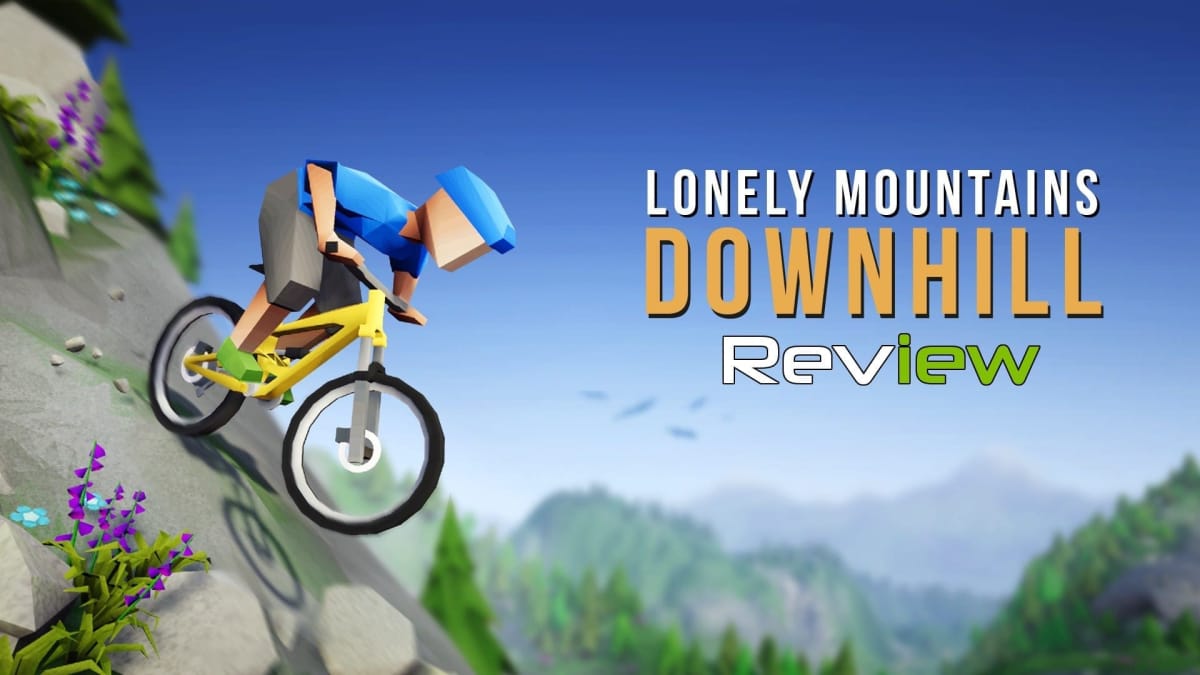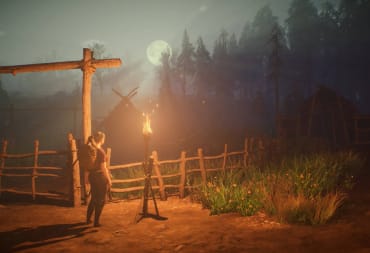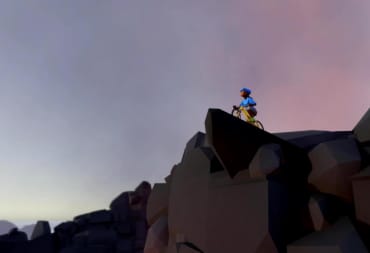I've never had much luck with cycling. Every time I took it up as a kid, something got in the way. Once, my bike fell apart. Another time, it was stolen. Sometimes it just didn't work in the first place. Each time something terrible happened, I'd console myself with the old "it could be worse" chestnut. Judging by Megagon Industries' Lonely Mountains: Downhill, however, cycling is a huge amount of fun and I should be kicking myself every day for not pursuing it more rigorously.
The experiment in Lonely Mountains appears to be thus: is it possible to make a Trials-style game that isn't overly punishing or frustrating when you fail? If that was Megagon's intention, the answer is a resounding yes. Lonely Mountains: Downhill is a paradoxically relaxing and challenging game. It's the perfect way to while away a few hours, accompanied by a podcast or perhaps a winsome indie-folk album about log cabins and lost loves.
Lonely Mountains: Downhill | The Scenic Route
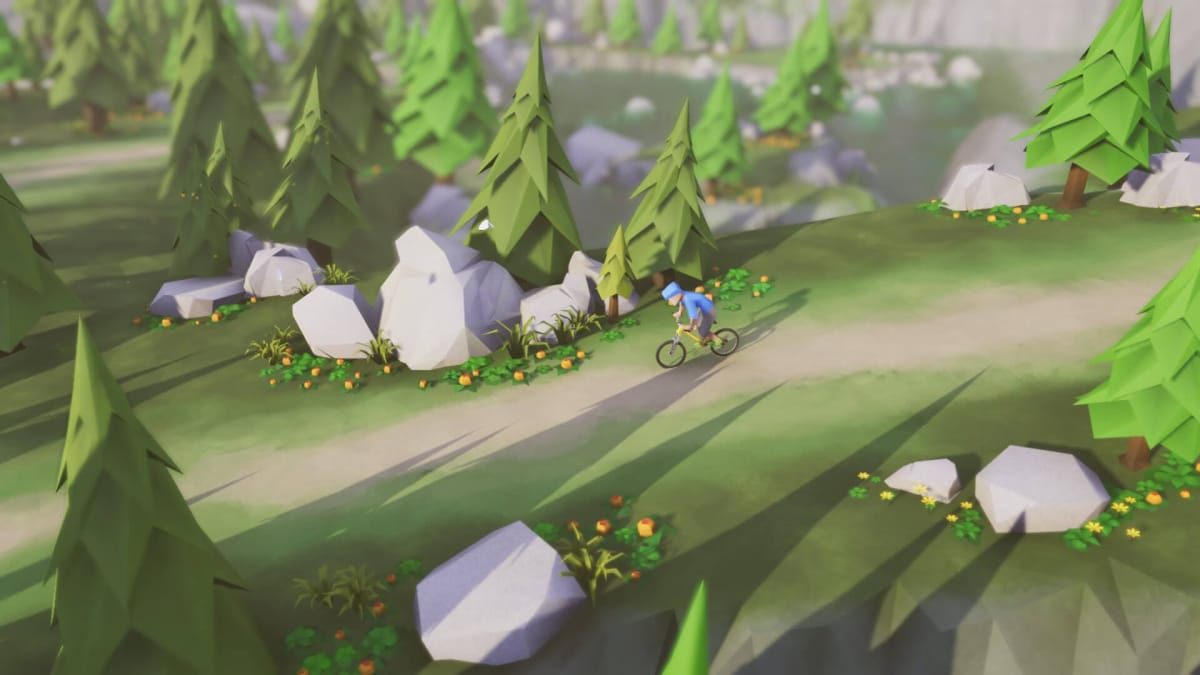
Lonely Mountains' core gameplay lies somewhere between Trials, Paperboy, and Firewatch. The game world divides into mountains, each one containing a number of individual trails. Your goal is to reach the bottom of each trail, first in as much time as you'd like, then with challenges attached. The more challenges you complete, the more trails, bikes, and customization options you unlock.
The trails themselves are beautiful. Lonely Mountains' low-poly art style gives the visuals a timeless, nostalgic charm. There's no in-game music, only the sound of leaves rustling and your bike hitting the dirt as you land jumps. If you're prone to loneliness, you'll want to load up a few podcasts here. Sometimes, the lack of music and sound can make Lonely Mountains feel a bit...well...lonely.
There's something to be said for games with aesthetics and sound design as unobtrusive as those of Lonely Mountains. If you want, you can completely ignore the overarching structure. You don't ever need to chase scores or best times if you don't want to. Simply head into each trail's Explorer difficulty and ride around, finding shortcuts and finally getting through that newest season of Serial.
Lonely Mountains: Downhill | Calm Like A Bomb
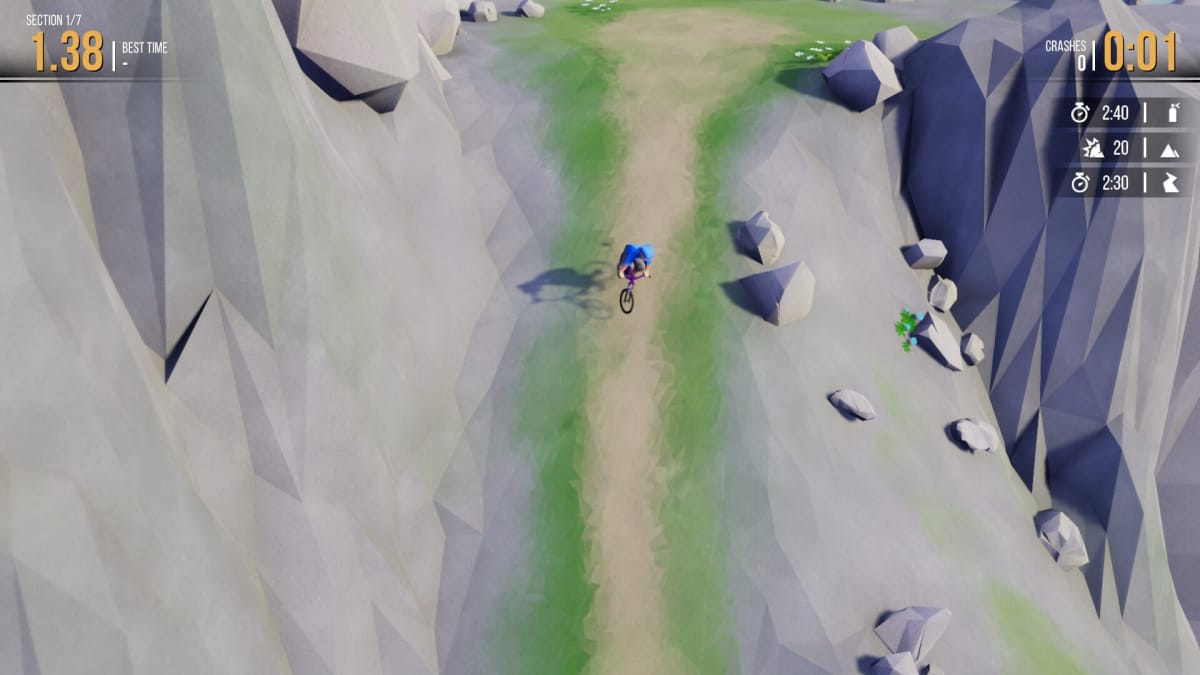
There is also, of course, an actual game to be played in Lonely Mountains. Each trail has three challenges, usually comprising of time attacks or avoiding numerous crashes. Before you ride, you can add or remove challenges to your run. You could, for example, choose only to shoot for coming in under two minutes. Alternately, you could boast that not only will you complete the course in under two minutes, but you'll also do it in under a minute and a half and not crash once. This ingenious system makes me wonder why other games haven't adopted it en masse.
The choose-your-own-challenge system means you rarely feel like failure is anyone's fault but your own. After all, it was you who boasted you could do this, wasn't it? If you didn't feel ready, you could always have spent some more time in Explorer mode. The addition of a no-obligation chance to explore the levels is also a stroke of design genius. It means you can find your optimal route and practice it multiple times before you head in for real.
There is a downside to this mode. Every time you unlock a new trail, you're forced to play it first on Explorer mode. That makes sense because you need to get the lay of the land. Still, there's no real punishment for failure in the challenge modes. Having the option to get straight into it on Beginner or Expert would be nice. As it stands, if you're looking for a quick run, you're going to be disappointed if you simultaneously want to make progress.
Thankfully, everything else is set up to make moving through the mountains smooth. The difficulty curve in Lonely Mountains is lovely. Each mountain ramps (no pun intended) up the difficulty nicely. You'll start off coasting down relatively easy hills and end up leaping over terrifyingly deep chasms. The brilliance of Lonely Mountains' design is that you won't notice where the hard part started. Like the rest of the experience, the difficulty marries challenge and relaxation to great effect.
Lonely Mountains: Downhill | On Shaky Ground
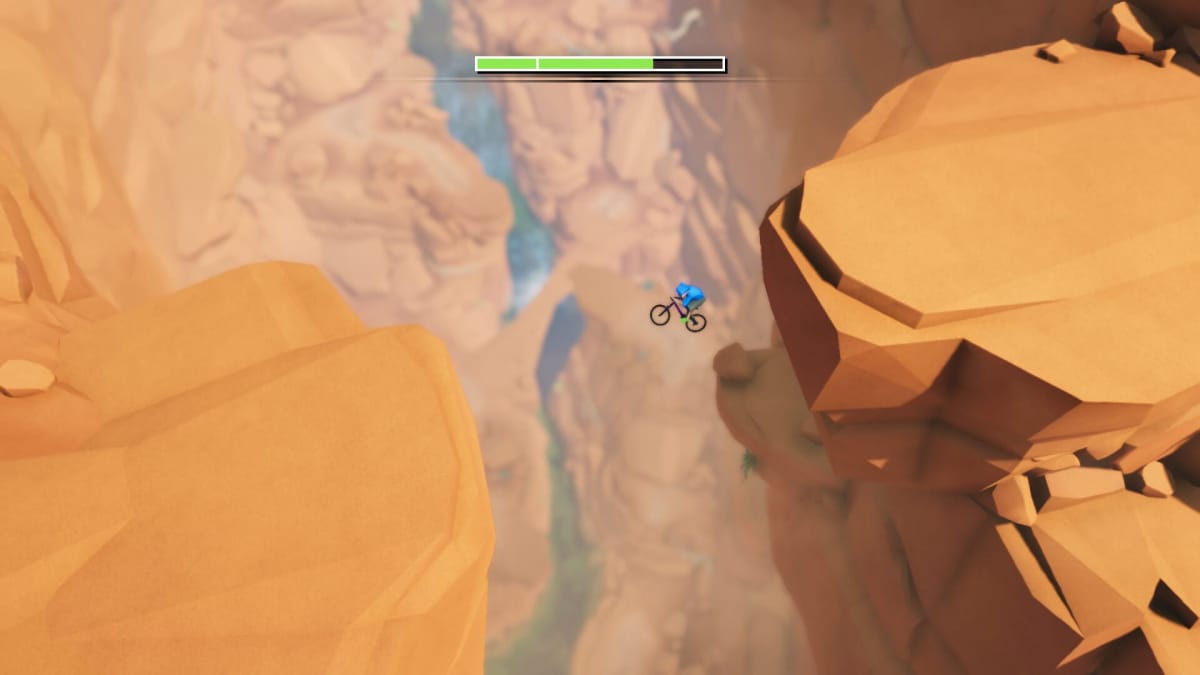
The controls in Lonely Mountains are great. There's a pleasing weight to each thud and skid of the bike. Steering takes some getting used to - there are two control methods to choose from, so don't be afraid to try them both - but the bike quickly starts to feel like an extension of your body. Making a particularly difficult turn or navigating a tricky route feels immensely satisfying thanks to the control scheme.
Unfortunately, the levels themselves aren't quite as well-designed as the gameplay calls for. Each level has a "safe" route marked out by a clear path. There are also a number of trickier routes that have less pronounced paths or often no paths at all. If you want to shoot for the best time, you'll definitely want to take these less-traveled routes. Early on, the levels communicate pretty clearly which path is which, but later things get a lot muddier, and not in a good way.
Lonely Mountains' camera constantly shifts to accommodate your position, but the perspective sometimes feels off. This means you frequently can't see hazards until they're about to knock you off your bike. There's also a real problem with alignment. Bridges feel like they're slightly to the left or right of where they actually are, meaning you can miss them entirely because of the viewpoint. You can mitigate this by using Explorer mode, but the idea of memorizing moments where Lonely Mountains simply fails to offer a satisfactory camera angle feels galling. Better perhaps to fix those moments than to expect the player to simply learn to deal with them.
There's also the problem that later on, Lonely Mountains' levels become seriously labyrinthine. Knowing where you are in the level and which direction you need to go becomes very difficult. The tempting answer to this conundrum is simply "downhill", but there are lots of flat sections during which you can't easily discern elevation. Getting lost in an ostensibly linear game is not fun, and since Lonely Mountains doesn't have a minimap, these moments can quickly add up.
Lonely Mountains: Downhill | Tuning Up
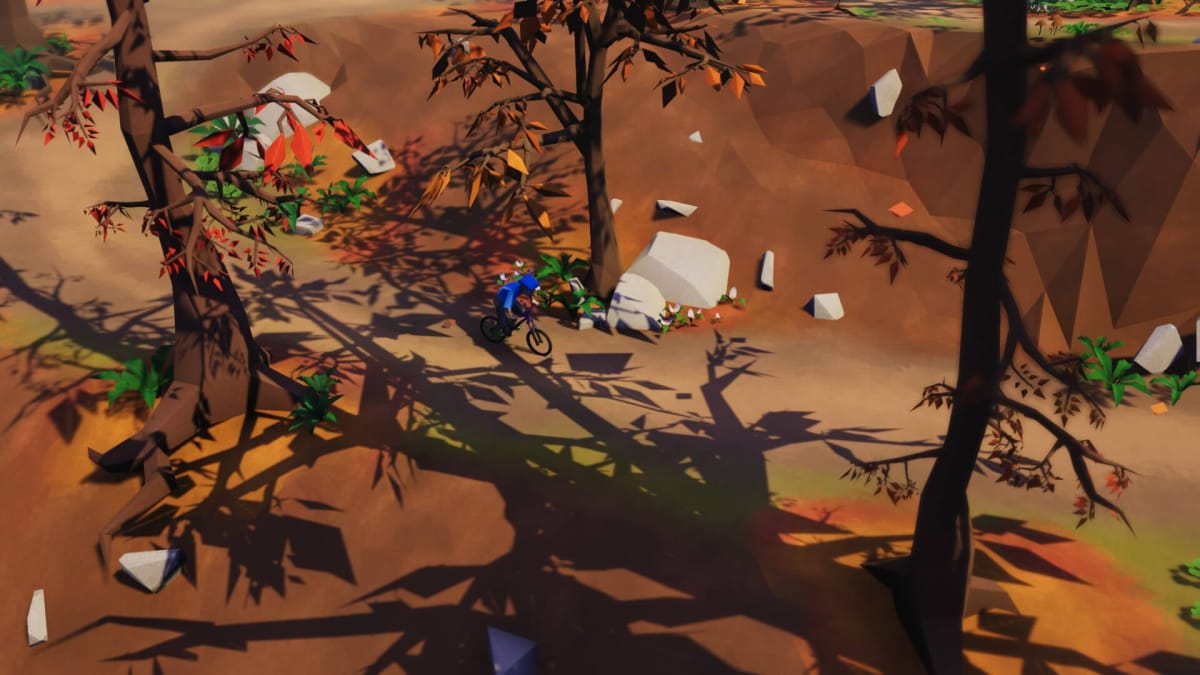
During the course of a Lonely Mountains playthrough, you'll eventually start to collect parts for new bikes. Each bike has different stats, strengths, and weaknesses. This is nice on paper, but anything other than the default bike feels superfluous. You can make it through the entire game just fine riding the basic bike, and since there's no way to upgrade it or add parts, it is entirely possible to completely ignore the customization aspect of Lonely Mountains.
That goes double for the aesthetic upgrades. Each bike has a number of different paint jobs you can unlock. These are completely vestigial and add literally nothing to the experience, especially given that they're simply palette swaps. A few extra designs would have been nice. As it stands, there's simply no motivation to try and unlock any of the aesthetic extras.
In the grand scheme of things, these aren't major problems. Lonely Mountains is simply trying to give you a goal to work towards. As a means to facilitate the core gameplay and give you an excuse to get out there on the trails, aesthetic upgrades work fine. There's a more elegant solution out there somewhere - audio logs with fictionalized mountain histories, perhaps, or a fun little backstory to discover - but paint jobs and extra bikes do the job.
Lonely Mountains: Downhill Review | Final Thoughts
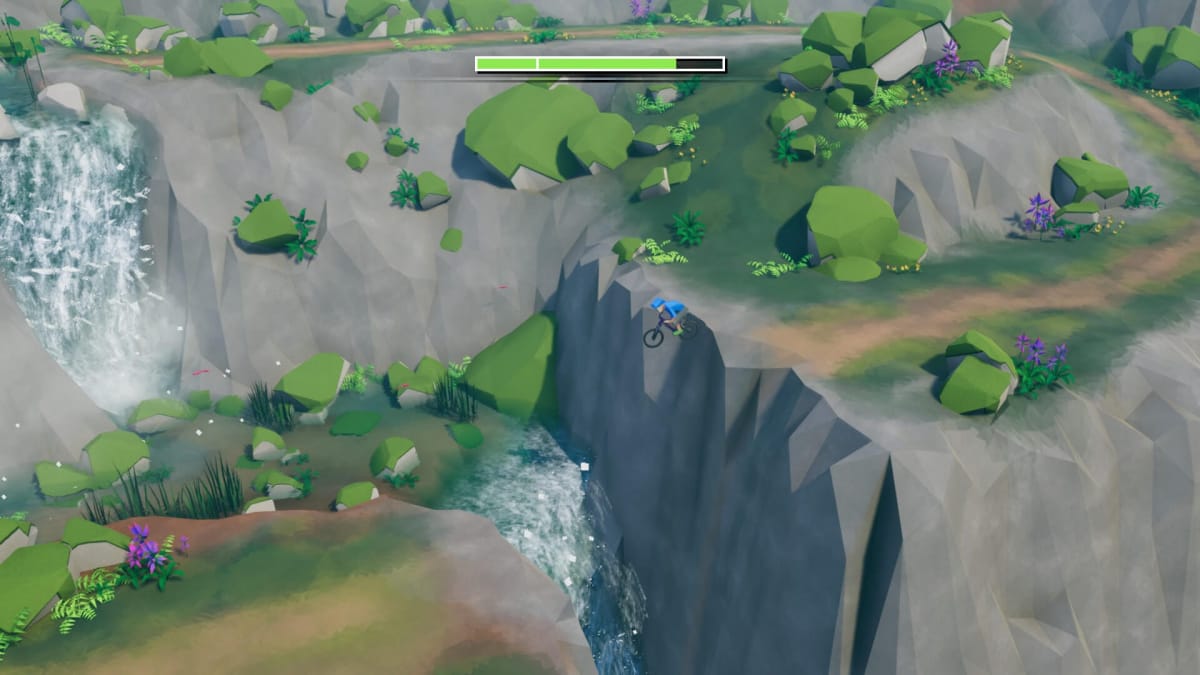
Lonely Mountains: Downhill is a solid cycling game with very few bells and whistles, appropriately enough. It won't give you pause if you're not interested in high-score chasing or getting onto the international leaderboards. As a relaxation aid, it works wonderfully, despite some less-than-stellar level design. If you're looking for a deep, intricate game or a well-crafted story, you won't find them here. When it's time to unwind after a hard day and you've got a few albums you've been meaning to get into, you should turn to Lonely Mountains. Its well-crafted mechanics, sprawling levels, and surprising amount of content will keep you busy - or not busy, as the case may be - for many hours.
TechRaptor reviewed Lonely Mountains: Downhill on PC via Steam using a copy provided by the publisher. It is also available on PlayStation 4 and Xbox One.
Review Summary
Pros
- Beautiful Low-Poly Visuals
- Satisfying Controls
- Relaxing, Yet Challenging
- Great Core Gameplay Loop
Cons
- Gets Repetitive
- Occasionally Confusing Level Design
- Pointless Unlockables
- Perspective Feels Off
Have a tip, or want to point out something we missed? Leave a Comment or e-mail us at tips@techraptor.net
